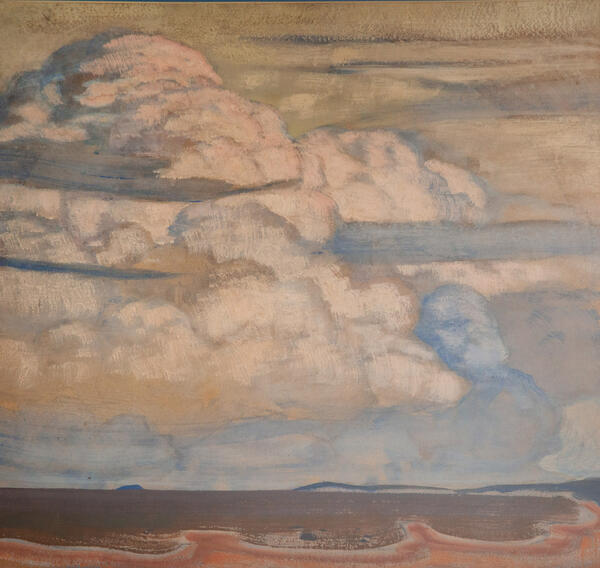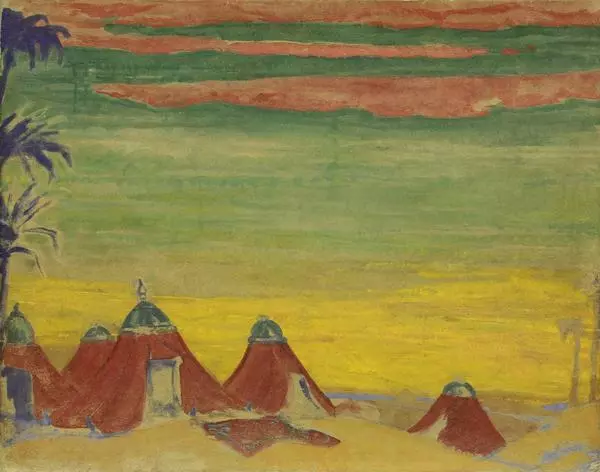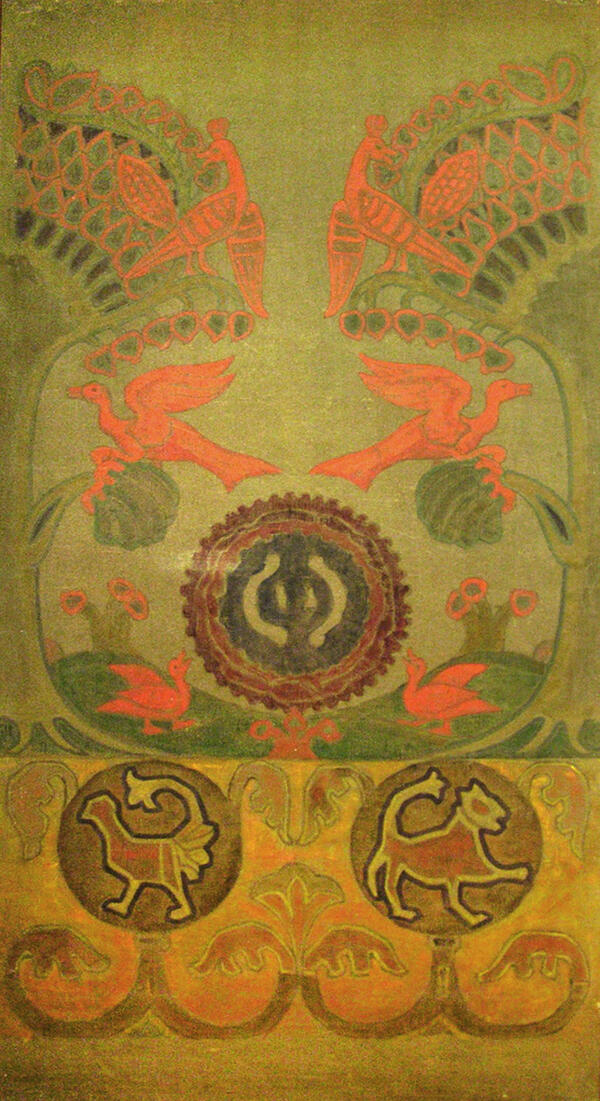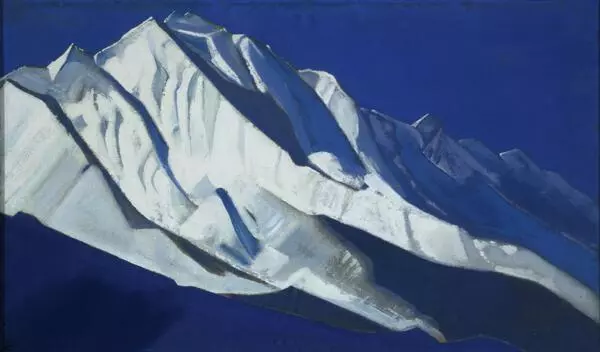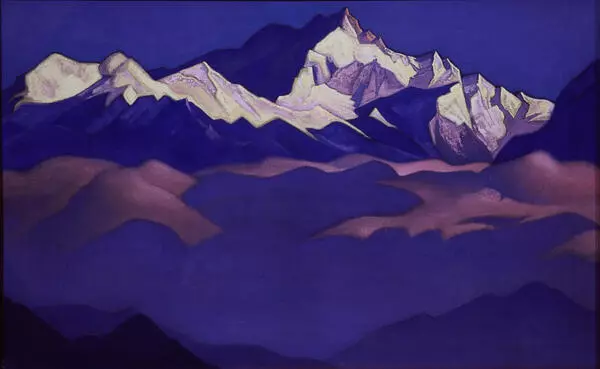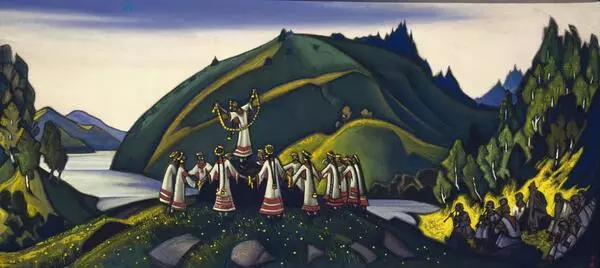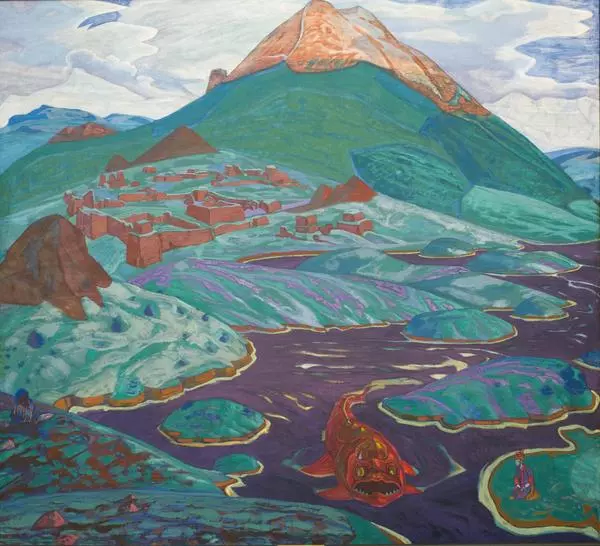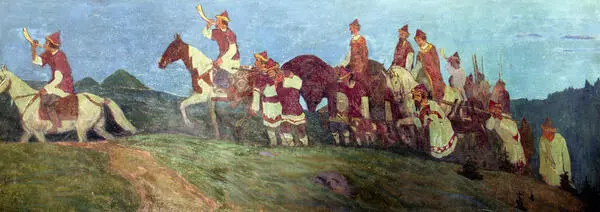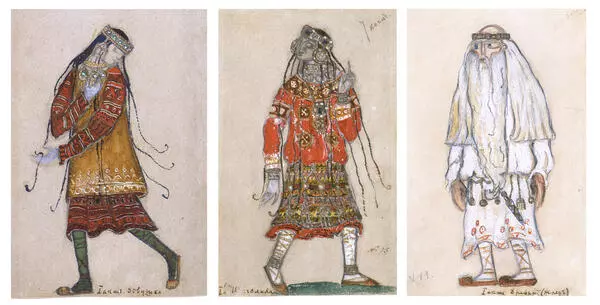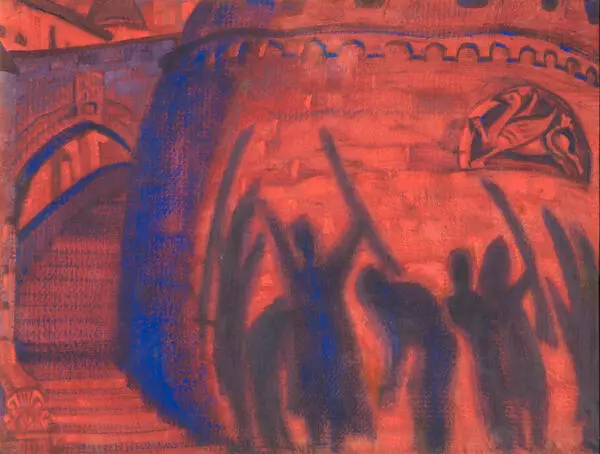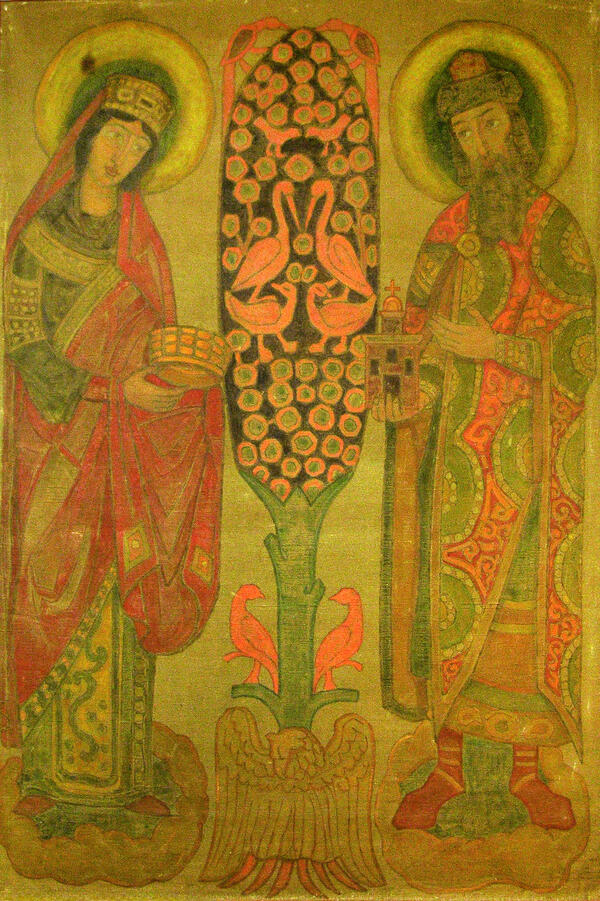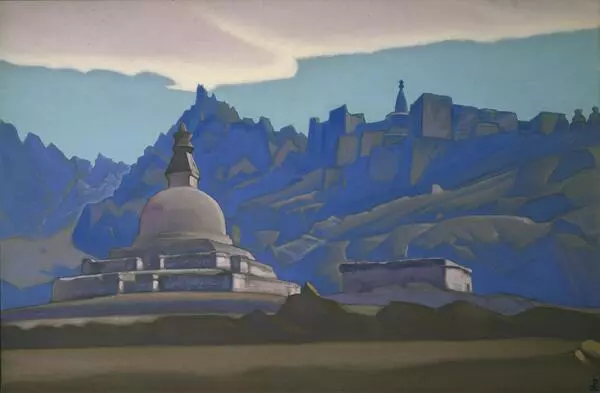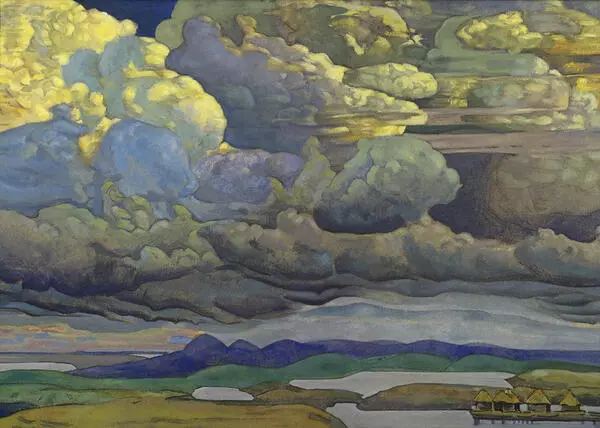The Nikolai Golovanov Apartment Museum houses a work named “Lake” created by Nicholas Roerich in 1915, which used to be part of the conductor’s private collection. Roerich combined traits of Realism and Symbolism in his art. In 1906, he almost abandoned oil and switched to tempera, while also experimenting with the composition of paints. Many contemporaries of Nicholas Roerich noted the “musical quality” of his works.
Nicholas Roerich graduated from the Higher Art School at the Imperial Academy of Arts, his project painting called “Messenger” was acquired by Pavel Mikhailovich Tretyakov. The talent of Nicholas Roerich manifested itself in various areas: he was among those who worked on “The History of Russian Art” (edited by Igor Grabar) and “The Russian Icon”. As an archaeologist, Roerich took part in the excavations of burial mounds in a number of Russian regions, was a member of the Russian Archaeological Society, and studied folklore.
In 1910, Roerich put a lot of effort into preserving the Church of the Savior on Nereditsa and Rurikovo Gorodische in Veliky Novgorod. In 1915, together with the composer Lyadov and the poet Gorodetsky, Roerich presented a report to Emperor Nicholas II on the need for legislative approval of the Regulations on the Protection of Historical Monuments in Russia. Subsequently, the Regulations draft will become a prototype of the future international Roerich Pact for the Protection of Cultural Heritage. Among other things, Roerich created mosaics and murals for churches and houses, as well as designed ballet, drama and opera performances, such as “The Snow Maiden”, “Peer Gynt”, “Princess Maleen”, “Valkyrie” and others. Roerich was the designer of the famous Ballets Russes performances, organized in Paris by Sergei Diaghilev, that included “Polovtsian Dances” from “Prince Igor” by Alexander Borodin, “The Maid of Pskov” by Nikolai Rimsky-Korsakov, and the ballet “The Rite of Spring” by Igor Stravinsky. Nicholas Roerich was also known as a book illustrator, working with various publications. The artist headed the “Mir iskusstva” artistic movement and the School of the Imperial Society for the Encouragement of Arts and was also engaged in teaching.
The painting “Lake” used to be part of the private collection of Helena Ivanovna Roerich, the artist’s wife. Throughout his life, Nikolai Golovanov added six more works by Nicholas Roerich to his collection, including the artist’s copy of the famous painting “Guests from Overseas”.
Nicholas Roerich graduated from the Higher Art School at the Imperial Academy of Arts, his project painting called “Messenger” was acquired by Pavel Mikhailovich Tretyakov. The talent of Nicholas Roerich manifested itself in various areas: he was among those who worked on “The History of Russian Art” (edited by Igor Grabar) and “The Russian Icon”. As an archaeologist, Roerich took part in the excavations of burial mounds in a number of Russian regions, was a member of the Russian Archaeological Society, and studied folklore.
In 1910, Roerich put a lot of effort into preserving the Church of the Savior on Nereditsa and Rurikovo Gorodische in Veliky Novgorod. In 1915, together with the composer Lyadov and the poet Gorodetsky, Roerich presented a report to Emperor Nicholas II on the need for legislative approval of the Regulations on the Protection of Historical Monuments in Russia. Subsequently, the Regulations draft will become a prototype of the future international Roerich Pact for the Protection of Cultural Heritage. Among other things, Roerich created mosaics and murals for churches and houses, as well as designed ballet, drama and opera performances, such as “The Snow Maiden”, “Peer Gynt”, “Princess Maleen”, “Valkyrie” and others. Roerich was the designer of the famous Ballets Russes performances, organized in Paris by Sergei Diaghilev, that included “Polovtsian Dances” from “Prince Igor” by Alexander Borodin, “The Maid of Pskov” by Nikolai Rimsky-Korsakov, and the ballet “The Rite of Spring” by Igor Stravinsky. Nicholas Roerich was also known as a book illustrator, working with various publications. The artist headed the “Mir iskusstva” artistic movement and the School of the Imperial Society for the Encouragement of Arts and was also engaged in teaching.
The painting “Lake” used to be part of the private collection of Helena Ivanovna Roerich, the artist’s wife. Throughout his life, Nikolai Golovanov added six more works by Nicholas Roerich to his collection, including the artist’s copy of the famous painting “Guests from Overseas”.

